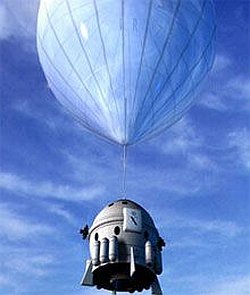IL Aerospace Technologies

IL Aerospace Technologies (ILAT) was an Israeli company founded to develop reusable and cost-effective technology for space tourism and exploration. The team initially consisted of seven members with expertise in physics, mechanics, electronics, aeronautics, and material science, all veterans of the Israeli Armed Forces with experience in aerospace and high-tech industries. Led by Dov Chartarifsky, a mechanical engineer with background in aerodynamics and heat transfer, ILAT participated in the X PRIZE competition that challenged teams to develop private spacecraft capable of carrying humans to space, demonstrating reusability and cost-effectiveness in space travel.
Their vehicle, the Negev 5, was designed as a self-sufficient reusable sub-orbital spacecraft capable of carrying three people to an altitude of 120 km. The craft utilized a unique launch approach combining a helium balloon with rocket propulsion. The mission profile involved ascending to 30 km via a High-Altitude Launch Platform (balloon), followed by ignition of a 50 kN hybrid rocket engine using HTPB fuel and liquid oxygen. After reaching 80 km under power, the vehicle would continue to 120 km, allowing 10-15 minutes of weightlessness before descending by parachute with inflatable bags cushioning the landing.
The propulsion system featured a hybrid rocket that provided safety advantages over traditional solid rockets, including throttle control and shutdown capability. The craft included a Reaction Control System with six small thrusters for maneuvering.
ILAT planned a series of test flights beginning with the unmanned Negev 1 in December 2003, culminating with the Negev 5's X PRIZE attempt in October 2005. However, these attempts never materializated.

